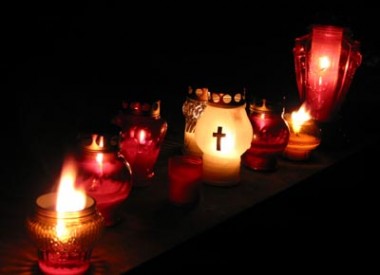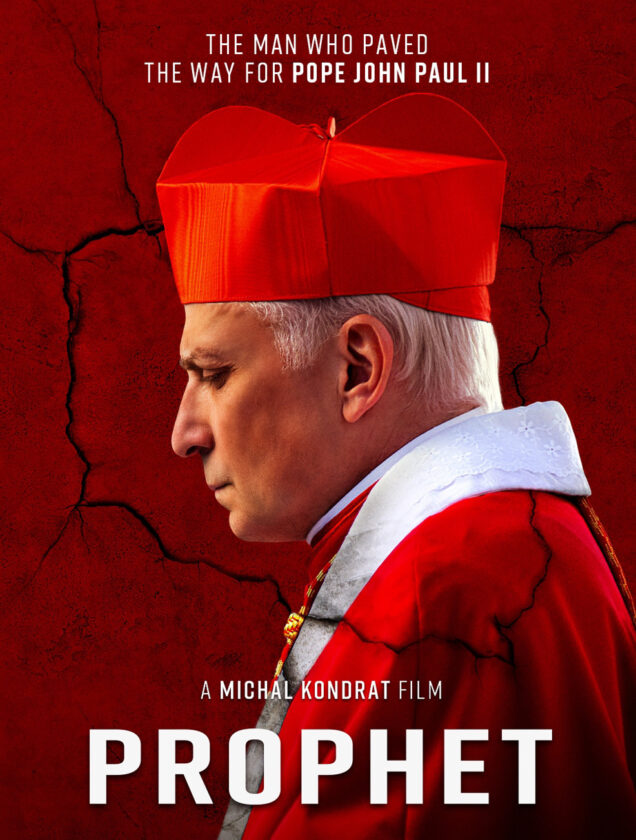The celebration of All Saints, known and unknown, on November 1st was introduced into the Church Liturgy by Pope John XI in 835, while All Souls’ Day on November 2nd began more than 100 years later in 998, when the Abbot of the Benedictine Monastery at Cluny ordered the Benedictine congregations to say the mass and prayers in the intention of all the deceased.
In Polish tradition (w polskiej tradycji), especially the folk one, both these holidays, All Saints’ Day in particular, are devoted to praying for the souls of the dead (mają charakter zaduszny). In this sense they are a continuation of the ceremonies for the dead performed by our ancestors.

On All Saints’ Day all Polish cemeteries (wszystkie polskie cmentarze) are visited by great numbers of people who come to pray over the graves for their close relatives. Candles are lit (znicze są zapalane) on every grave (na każdymgrobie) and flowers are put on them. The custom requires (obyczaj nakazuje) to burn candles, lay flowers on evergreen branches also on old, unattended and forgotten graves, visited by no one.
A lot of people in the States ask me: “Why would you have such a sad holiday after the Halloween?” Well, polish people do not celebrate Halloween (although it became more popular within last few years and there are some places where Halloween parties are held). And I also tell them that it actually is not a “sad holiday”. I always remember all my family getting together, my cousins coming to visit, almost like a family reunion. Of course it was sad to think about all our relatives that are not with us any more. But at the end it was always a nice day with the family.
It was believed in Poland that on the night from November 1st to 2nd shadows of the dead (cienie zmarłych), walk from cemetery to church to the night service celebrated for them by the ghost of the dead provost.
On those days church beggars who prayed under the church and churchyard wall were given lavish hands-outs, for it was thought a deceased ancestor might take the shape of a beggar. Till the early 20th century on All Saints’ Eve bread was baked, broad beans were cooked and in the eastern territories a funeral dish called kutia was prepared. All that along with vodka was left on the table for the night for the guests from other world (dla gości z zaświatów).
On cemeteries and at the crossroads great fires were lit, especially on the graves of those who committed suicide (tych którzy popełnili samobójstwo), once buried outside cemeteries.
Today all these practices and offerings have been replaced by church services and prayers, “callings” (zapowiedzi) by name of the dead in whose intentions the prayers are made, candles and flowers. However, the old and the present ceremonies to the dead souls (dawne i obecne kościelne obchody zaduszne) have one motivation in common: they express lasting memory (wyrażają nieprzemijającą pamięć) of all the deceased as well as gratitude and respect (wdzięczność i szacunek) for them.

All Saints’ Day and All Souls’ Day are also days of national remembrance (dniami pamięci narodowej). Candles burn on the Tomb of Unknown Soldier (na Grobie Nieznanego Żołnierza) , graves and insurgents, at military quarters of cemeteries (w cmentarnych kwaterach wojskowych), on countless anonymous (niezliczonych bezimiennych) soldiers’ graves all over fields and forests in Poland, on execution sites and commemorative tablets to soldiers killed at the fronts of all wars as well as on graves of civilians executed during those wars.
Candles burn also on graves of people of special merits for Poland and its culture (na grobach ludzi szczególnie zasłużonych dla Polski i jej kultury). In all these sites of martyrdom and national memories guards of honor are set up (zaciągane są warty honorowe).
They signify not only the imperishable memory (nieprzemijającą pamięć) but also the conviction that not everything dies in us.



